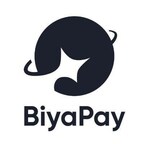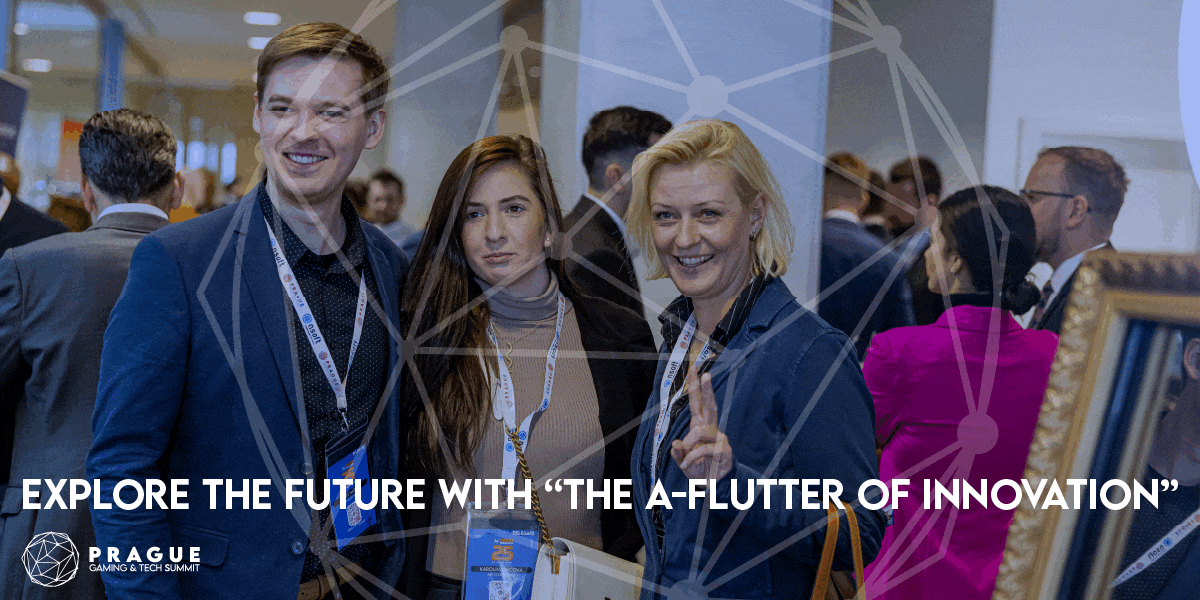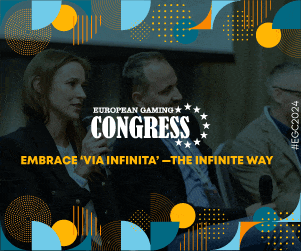Fintech PR
Why Are There No New Users in the Crypto Market? How Multi-Asset Trading Wallet BiyaPay Is Finding New Solutions Amidst Fierce Competition and User Confusion ?

SINGAPORE, March 31, 2025 /PRNewswire/ —
Introduction
In recent years, the cryptocurrency market has undergone a dramatic shift from euphoria to calm. At one point, Bitcoin and Ethereum prices hit new highs, and concepts like NFTs and the Metaverse rapidly gained traction, attracting a flood of new users. However, as the market cooled down, the growth of new users slowed significantly, even showing signs of stagnation. This phenomenon has caused concern within the industry: why is the crypto market struggling to attract new participants? Despite continuous technological innovation and an abundance of new projects, public interest has not kept pace. The challenges faced by the crypto market are rooted in increasing competition and a more complex ecosystem, which has left new users confused. This article will explore why the crypto market is experiencing a lack of significant new user growth and discuss how, in the midst of intense competition and user confusion, companies like BiyaPay, a leading multi-asset trading wallet, are finding new ways to drive growth in the crypto industry.
Market Situation Analysis
The competition in the crypto market has intensified, and the ecosystem has become increasingly saturated. From public chains to sidechains, to Layer 2 networks and various decentralized applications (dApps), the number of projects has exploded. According to statistics, over 350 active blockchain networks exist worldwide, and the number of new tokens issued each day reaches tens of thousands. The fragmentation of the market has intensified, and users are now faced with an overwhelming number of choices. However, despite the continuous increase in projects, user growth has not followed suit. Indicators like Total Value Locked (TVL) show that the current cycle has not surpassed previous market highs. The decline in search interest for the term “crypto” on Google Trends also reflects the cyclical decrease in public interest. For beginners, entering the crypto world is far from simple: hundreds of blockchains, wallets, and various protocols and applications make the decision process overwhelming, and the sheer number of options raises the cognitive and usability barriers.
The stagnation in new user growth is driven by multiple factors. First, the user experience of crypto products is significantly more complex than that of traditional internet applications. New users must not only install digital wallets, back up recovery phrases, purchase digital currencies, and pay miner fees but also switch between different blockchain networks, which is particularly daunting for those with no prior exposure to crypto technology. Second, market fragmentation is severe. The ecosystems of various public chains are isolated, making asset interoperability a challenge. This means users need to switch between platforms, for example, dApps on Ethereum have high transaction fees, and users seeking cheaper alternatives often have to learn new wallets and operational logic. The lack of unified standards and interoperability creates friction in user experiences. Lastly, information overload exacerbates user confusion. With thousands of token projects, new users often struggle to distinguish valuable projects from fraudulent ones. The complexity of the experience and the overload of information discourage potential users from entering the market.
Beyond the complexity of the user experience, external factors also contribute to the hesitation of new users entering the crypto market. One significant challenge is regulatory uncertainty. Different countries have vastly differing attitudes toward cryptocurrencies, and their regulations are subject to frequent changes. Some countries have welcomed crypto innovation only to suddenly impose strict regulations, while others have yet to define clear regulations. This uncertainty makes it difficult for crypto companies to operate compliantly, and users feel uneasy about investing in crypto due to the risk of sudden regulatory crackdowns. Another challenge is the frequent occurrence of security incidents, which has damaged the public image of the industry. Events such as exchange bankruptcies, project founders running off with funds, and hacking incidents have shaken user confidence in the safety of crypto platforms. The media’s coverage of crypto scams, money laundering, and other criminal activities has further exacerbated the industry’s reputation crisis. These events make ordinary users wary of entering the crypto space, as they fear losing their funds or getting caught up in illegal activities. Trust issues have become the most significant psychological barrier preventing new users from entering the market.
Core Barriers to User Growth
The target audience for the crypto industry is not homogeneous but highly diversified. Developers, ordinary users, investors, and institutions all have different needs, contributing to the fragmentation of the market. For example, public chain projects primarily target developers, as only developers can build applications that attract end users and grow the ecosystem. Therefore, public chains need to focus on “developer marketing” and technical documentation to encourage developers to adopt their chains. However, these efforts may not directly translate into growth for the average user base. For dApp applications, which should ideally focus on end users, many instead focus on attracting token holders and speculative funds. Sometimes token holders are not actual users of the product but engage in speculative arbitrage, which does not contribute to real user growth. Venture capitalists and institutional investors are primarily focused on return on investment (ROI), and they invest in projects with the expectation that token prices will appreciate. This often leads projects to prioritize token price management and exchange partnerships over improving the product’s appeal to everyday users. Meanwhile, retail speculators are more concerned with short-term price fluctuations and lack patience for long-term value, which makes it difficult to cultivate a loyal user base. Technical partners, such as cross-chain bridges and wallet plugins, form another isolated group. The diverse interests of these stakeholders contribute to the fragmentation of the market, making it harder to target and grow a unified user base.
The high technical complexity of crypto technology is another significant barrier to user adoption. Many ordinary people have heard of Bitcoin but find it difficult to understand blockchain principles, private key signing, or how to manage a string of characters on their own. The high technical threshold leads to mistakes or discomfort when users first experience the technology. For example, a user might accidentally enter the wrong address during a transaction, resulting in the loss of their assets. The high transaction fees, especially during Ethereum’s peak, also discourage small investors and beginners from participating in the market. These issues highlight that blockchain infrastructure is still far from being ready for large-scale commercial adoption. At the same time, the lack of trust has worsened the problem. The 2021 bull market attracted a wave of mainstream users, especially with celebrities endorsing NFTs, but many new users withdrew after the market crash in 2022. Exchange collapses and project failures have left people with negative perceptions of the industry. When the media frequently reports on Bitcoin’s “death” or the collapse of major crypto projects, it reinforces this negative view. Therefore, when technical complexity and trust issues are combined, convincing new users to enter the market becomes an uphill battle. They are either discouraged by the high barriers to entry or deterred by security concerns.
The high cost and complex entry process are additional hurdles for new users. For many newcomers, buying cryptocurrencies is already a significant barrier. Fiat-to-crypto channels are limited, and transaction fees can be high. Through third-party payment methods, users might face additional fees of 2-5%, discouraging small-scale users. Additionally, the volatility of crypto asset prices often causes new users to fear that they will “get stuck” as soon as they enter the market, adding to the psychological cost. Transaction costs are also significant, including high fees for blockchain Gas and additional charges for withdrawal and exchange transactions. Furthermore, the onboarding process is complex. Traditional financial account opening may only require identification documents, but in the crypto world, new users often face multiple steps: registering on exchanges, completing KYC (Know Your Customer) verification, linking bank accounts or wallets, depositing fiat currency to purchase USDT or BTC, and finally transferring funds to personal wallets. This process involves several platforms, and each step introduces new concepts (KYC, wallet addresses, private keys) that users need to understand. Some users may abandon the process midway or fall victim to phishing sites that steal recovery phrases. In comparison, Web2 applications have far simpler onboarding processes. The cumbersome entry process further reduces the attractiveness of crypto products to new users.
Where Is the Breakthrough?
To overcome these barriers, the crypto industry must focus on lowering entry barriers, building trust, and enhancing practical functionality. One company leading the way in this regard is BiyaPay, a global multi-asset trading wallet that offers potential solutions through its product features and service model.
BiyaPay’s standout feature is its multi-asset trading function, which allows users to manage various financial assets, including digital currencies, U.S. stocks, Hong Kong stocks, and more, all within a single platform. This “one-stop” design significantly reduces the entry barrier for new users. Firstly, new users no longer need to download multiple apps or switch between platforms. Traditionally, users needed to open a securities account to trade stocks and register with a crypto exchange for digital currencies. With BiyaPay, users can trade both stocks and crypto assets in one wallet, greatly simplifying the process. For traditional investors, they can now access digital currencies through a familiar stock trading platform, while crypto users can easily engage in traditional asset trading. Secondly, this multi-asset integration makes cross-market operations much more convenient. Users can exchange stablecoins for U.S. dollars and trade U.S. or Hong Kong stocks without the need for complex cross-border transfers or opening offshore accounts. BiyaPay supports converting USDT or other digital assets into fiat currencies and then using them to buy and sell U.S. or Hong Kong stocks, all without the hassle of opening offshore bank accounts. The platform allows for rapid account opening in just five minutes and seamless asset exchange, making global financial markets easily accessible. This simplified experience greatly reduces the psychological barriers for new users, making them more likely to engage with different features.
Another breakthrough offered by BiyaPay is its global payment and remittance services, which solve the difficulties associated with cross-border transactions. The platform supports real-time exchange and remittance for over twenty fiat currencies and more than ten major cryptocurrencies at very low costs. For example, a user working overseas can easily send funds to their family by exchanging digital assets into the local fiat currency on BiyaPay and transferring the funds to a recipient’s account. The low fees (around 0.5%) and the elimination of complex intermediary steps provide a significant advantage over traditional remittance services, which can take days to process and have high fees. This service meets real-world financial needs, attracting users who may not be interested in crypto technology itself but need a convenient cross-border payment solution. For instance, in countries experiencing high inflation, residents can use BiyaPay to convert their local currency into stablecoins for value preservation and then exchange them back into fiat currency when needed. This new use case for crypto is a major breakthrough for the industry, as it shifts the focus from speculative trading to practical financial solutions, making the crypto world more accessible.
BiyaPay also builds user trust by operating in a fully compliant and secure manner. It is headquartered in Singapore, with subsidiaries in the U.S., Canada, and Hong Kong, holding comprehensive financial licenses to ensure legal and compliant operations. BiyaPay emphasizes its “complete licensing, safe and reliable” credentials, which help build trust, especially during times of regulatory uncertainty. Users are more likely to trust a regulated platform with legitimate licenses rather than an anonymous underground exchange. In addition to regulatory compliance, BiyaPay also focuses on security, using bank-grade encryption and multi-factor authentication mechanisms to safeguard user assets and data. This focus on security and risk management ensures that users can make secure transactions without worrying about their funds being frozen or confiscated, a common concern among crypto users.
BiyaPay’s multi-asset strategy not only lowers entry barriers but also broadens its potential user base. By offering both traditional financial assets and cryptocurrencies on the same platform, BiyaPay appeals to a diverse range of investors. Traditional investors who are interested in global markets can use BiyaPay to access cryptocurrency markets easily, while crypto investors can use the platform to diversify their portfolios into traditional assets. This cross-pollination between the “stock” and “crypto” communities significantly expands BiyaPay’s user base.
Future Trends and Outlook
Looking ahead, the emergence of Web3 technologies offers new growth opportunities for the crypto market. Social finance, NFTs, and the Metaverse are emerging fields that could drive the next wave of user growth. BiyaPay can tap into these trends by supporting features such as NFT asset management and Metaverse payment solutions, which would cater to users’ needs in these new areas.
In addition to technological innovation, the crypto industry needs to invest in branding and user education to truly reach new audiences. Clear marketing messages and user education efforts can break down existing barriers to entry. By promoting simple, relatable messages such as “blockchain makes cross-border payments as easy as texting,” crypto platforms like BiyaPay can resonate with mainstream users and reduce the cognitive hurdles new users face.
Conclusion
The slowdown in new user growth in the crypto market is due to a combination of factors, including technological complexity, market fragmentation, and trust issues. However, by improving the user experience, strengthening compliance and security, and expanding practical use cases, the market can overcome these barriers. BiyaPay, as a leading multi-asset trading wallet, demonstrates a successful approach by offering integrated services, global payment solutions, and strong regulatory compliance. The future of the crypto industry looks promising, with the potential to attract new users through innovative products and improved user experiences.
About BiyaPay
BiyaPay is a global multi-asset trading wallet that supports instant exchange of more than 30 fiat currencies and more than 200 digital currencies, and provides USDT direct advertising US stocks, Hong Kong stocks and digital currency spot and contract trading services. Its compliance withdrawal channel and one-stop financial ecosystem are trusted by users around the world.
Learn more information
BiyaPay official website: www.biyapay.com
Customer service email: service@biyapay.com
Telegram supports: https://t.me/biyapay001
Logo – https://mma.prnewswire.com/media/2568572/image_5031329_39789762_Logo.jpg

Fintech PR
Sandbrook Capital and PSP Investments Announce Sale of Offshore Wind Pioneer Havfram to DEME

LONDON, MONTREAL, and OSLO, Norway, April 9, 2025 /PRNewswire/ — Sandbrook Capital, a private investment firm focused on building leading climate infrastructure companies, and the Public Sector Pension Investment Board (PSP Investments), one of Canada’s largest pension investors, today announced the signing of an agreement to sell Havfram, an international offshore wind infrastructure company, to DEME (Euronext: DEME), a global leader in offshore energy and marine engineering.
Established in 2021 through a strategic partnership between Sandbrook Capital and PSP Investments, Havfram was created to provide critical offshore wind installation capacity to the world’s leading energy companies. Under their ownership, Havfram has evolved into a world-class operator of Wind Turbine Installation Vessels (WTIVs), with two state-of-the-art vessels currently under construction and a strong contract backlog to build some of the largest offshore wind farms.
“We partnered with PSP Investments to build Havfram because we saw a unique market opportunity to provide the state-of-the-art vessels required to build today’s enormous offshore wind farms” said Christopher Hunt, Partner at Sandbrook Capital. “In just a few years, Havfram has become one of the most important players in the offshore wind industry. We are proud of what the team has achieved and the positive financial returns delivered to our investors. DEME will be an outstanding steward of the company in its next phase of growth.”
“Our investment in Havfram reflects our broader capabilities and commitment to invest in assets essential to the renewables value chain, while generating strong risk-adjusted returns,” said Sandiren Curthan, Managing Director and Global Head of Infrastructure Investments, PSP Investments. “We are proud to have partnered with Sandbrook Capital and with the Havfram team to build a fleet of next generation WTIVs.”
“The support and long-term vision of Sandbrook Capital and PSP Investments have been instrumental in building Havfram into what it is today,” said Ingrid Due-Gundersen, CEO of Havfram. “We’re incredibly excited to join forces with DEME, a global leader with a shared mission to accelerate offshore wind deployment. Together, we will play a major role in enabling the energy transition around the world.”
The transaction, valued at approximately € 900 million, is expected to close by the end of April 2025, subject to customary closing conditions.
Goldman Sachs served as financial advisors and Thommessen served as legal advisor to Sandbrook Capital and PSP Investments.
About Sandbrook Capital
Sandbrook Capital is a private investment firm dedicated to building the next generation of climate infrastructure companies. Founded by a team of seasoned investors and operators, Sandbrook partners with exceptional management teams to grow sustainable businesses that deliver attractive financial returns and meaningful climate benefits. For more information, visit www.sandbrook.com.
About PSP Investments
The Public Sector Pension Investment Board (PSP Investments) is one of Canada’s largest pension investors with C$264.9 billion of net assets under management as of 31 March 2024. It manages a diversified global portfolio composed of investments in capital markets, private equity, real estate, infrastructure, natural resources, and credit investments. Established in 1999, PSP Investments manages and invests amounts transferred to it by the Government of Canada for the pension plans of the federal public service, the Canadian Forces, the Royal Canadian Mounted Police and the Reserve Force. Headquartered in Ottawa, PSP Investments has its principal business office in Montréal and offices in New York, London and Hong Kong. For more information, visit investpsp.com or follow us on LinkedIn.
About Havfram
Havfram is a Norwegian offshore wind installation company providing critical services to the global renewable energy industry. With two newbuild WTIVs under construction and a robust backlog, Havfram is positioned as a leading player in enabling the deployment of next-generation offshore wind farms. For more information, visit www.havfram.com.
Media contacts: PSP Investments, Charles Bonhomme, +1 438 465-1260, media@investpsp.ca; Sandbrook Capital, Daniel Yunger / James Hartwell, Kekst-Sandbrook@kekstcnc.com, 917.574.8582 / 917.842.9560

![]() View original content:https://www.prnewswire.co.uk/news-releases/sandbrook-capital-and-psp-investments-announce-sale-of-offshore-wind-pioneer-havfram-to-deme-302423944.html
View original content:https://www.prnewswire.co.uk/news-releases/sandbrook-capital-and-psp-investments-announce-sale-of-offshore-wind-pioneer-havfram-to-deme-302423944.html

Fintech PR
Strategic Value Partners and Blantyre Capital Acquire OQ Chemicals
OQ Chemicals will reinstate its name to OXEA
LONDON, April 9, 2025 /PRNewswire/ — Strategic Value Partners, LLC and its affiliates (together, “SVP”), a global alternative investment firm with approximately $22 billion of assets under management, and Blantyre Capital Limited (“Blantyre”), a London-based investment manager with more than €2.7 billion of long-term capital commitments, today announced that SVP-managed funds and Blantyre-managed funds have acquired OQ Chemicals (“the Company” or “OXEA”), a leading global producer and merchant of oxo chemicals. As part of the acquisition, OQ Chemicals will reinstate its name to OXEA, reaffirming its heritage and longstanding presence in the global chemicals industry.
OXEA is a premier manufacturer of oxo intermediates and oxo performance chemicals, supplying essential ingredients to specialty chemicals and additive manufacturers across key U.S. and European markets. The Company produces high-quality alcohols, polyols, plasticisers, carboxylic acids, specialty esters, and amines that are vital to the production of paints, coatings, plastics, lubricants, pharmaceuticals, and other essential sectors. OXEA plays a strategic role in global supply chains, supporting long-term demand across high-growth industries, including construction, automotive, and electronics. With more than 1,200 employees worldwide, OXEA markets its chemicals in over 60 countries, with primary production sites located in Germany and Texas, ensuring a strong global presence.
“OXEA’s leading market positions, global reach, and innovation capabilities provide a solid foundation for long-term growth,” said HJ Woltery, Co-Head of the European Investment Team at SVP. “We look forward to partnering with the OXEA team to build upon this strong foundation and continue delivering exceptional value to its customers and stakeholders across well-diversified markets.”
“We are pleased to partner with OXEA, a market leader with strong production capabilities,” said Mubashir Mukadam, Chief Investment Officer at Blantyre Capital. “OXEA’s significant expertise in oxo chemicals, combined with its global footprint, presents ample opportunities for growth. We look forward to supporting the Company as it continues to expand its product offerings and enhance its strategic position in the industry.”
SVP and Blantyre were advised on the transaction by Kirkland & Ellis, Akin, and Lazard.
About OXEA
OXEA is a global manufacturer of Oxo Intermediates and Oxo Performance Chemicals such as alcohols, polyols, carboxylic acids, specialty esters, and amines. These are used to produce high-quality coatings, lubricants, cosmetic and pharmaceutical products, flavors and fragrances, printing inks, and plastics. OXEA employs more than 1,200 people worldwide and markets its chemicals in more than 60 countries. More information under chemicals.oq.com About SVP
SVP is a global alternative investment firm that focuses on special situations, private equity, opportunistic credit and financing opportunities. The firm uses a combination of sourcing, financial and operational expertise to unlock value in its portfolio companies. Today SVP manages approximately $22 billion in assets under management, and since inception, has invested more than $53 billion of capital, including more than $18 billion in Europe. The firm, established by Victor Khosla in 2001, has over 200 employees, including more than 100 investment professionals, across its main offices in Greenwich (CT) and London, and a presence in Tokyo. Learn more at www.svpglobal.com
About Blantyre
Blantyre is a London-based investment manager specialising in middle market equity and debt special situations. The firm transforms businesses by providing time-sensitive capital that can support companies in financing growth, M&A, capital structure optimisation, operational enhancements, shareholder changes and recapitalisation, and liquidity solutions. Blantyre manages more than €2.7bn of long-term capital commitments on behalf of highly regarded institutional investors, including public and private pension plans, sovereign wealth funds, endowments, foundations, private funds, and family offices. Blantyre strives to be the middle market special situations firm of choice for its partners and investors. For more information, please visit www.blantyrecapital.com
Media Contacts
Greenbrook
James Madsen / Ksenia Galouchko
SVP@greenbrookadvisory.com
View original content:https://www.prnewswire.co.uk/news-releases/strategic-value-partners-and-blantyre-capital-acquire-oq-chemicals-302423909.html

Fintech PR
Kia announces strengthened growth engine strategy at 2025 CEO Investor Day

- Kia’s Plan S 2030 business strategy updated with growth strategies for new products, focus on electrification commitment
- Kia aims for global sales of 4.19 mln units, market share of 4.5%, by 2030
- EV: Target of 1.26 mln EV sales by 2030
… Global EV market share of 4.3%; expansion of volume EV lineup - PBV: To sell 250,000 PBVs by 2030
… Launches of PV5 in 2025, PV7 in 2027 and PV9 in 2029 - Pickup Truck: To add an EV pickup model for North America, building on Tasman pickup’s success
… Targeting global Tasman sales of 80,000 units per year - Aim to achieve KRW 170 tln in revenue, over 10% operating profit margin by 2030
- Kia to invest KRW 42 tln from 2025-2029, including KRW 19 tln for future business
- 2025 business guidance
…Targeting more than KRW 112 tln in revenue, market share of 3.7%
… Operating profit margin of 11% on global sales of more than 3.2 mln units
SEOUL, South Korea, April 9, 2025 /PRNewswire/ — Kia Corporation today shared its mid-to-long-term business strategies and financial targets at its CEO Investor Day.
As part of Kia’s updated Plan S strategy – the brand’s mid-to-long-term business plan – the company outlined its bold strategy to achieve global sales of 4.19 million units by 2030, including 2.33 million hybrid and fully electric vehicles (EVs).
Leveraging its agility and flexibility in response to the market environment, Kia will diversify its growth engines by introducing new models – such as PBVs and pickup trucks – and other key future businesses.
“Since launching the Kia Transformation strategy in 2021, Kia has continuously progressed to become a provider of sustainable mobility solutions that innovate space and enable customers to make better use of their time beyond conventional means of transportation,” said Ho Sung Song, President and CEO of Kia. “We will continue to develop the brand by implementing mid-to-long-term strategies to strengthen our internal stability and respond effectively to changes in the auto industry.”
Kia is accelerating its transformation by expanding its hybrid and EV offerings, aiming to sell 1.26 million EVs and nearly one million hybrids by 2030. The company will strengthen its EV leadership through the launch of volume models, including the EV3, EV4, EV5, and the upcoming EV2, while enhancing cost efficiency, customer service, and production strategies.
Kia is also expanding its PBV business, targeting annual sales of 250,000 units by 2030. Its PBV lineup will include PV5 in 2025, PV7 in 2027, and PV9 in 2029. Furthermore, Kia has launched its Tasman for global markets, with an annual sales target of 80,000 units, and will develop an EV pickup model for North America.
By 2030, Kia aims to achieve KRW 170 trillion in revenue and an operating profit margin of over 10 percent. The company plans to invest a total of KRW 42 trillion from 2025 to 2029, with KRW 19 trillion allocated to future business.
Photo – https://mma.prnewswire.com/media/2660795/Photo_1__Kia_2025_CEO_Investor_Day.jpg
Photo – https://mma.prnewswire.com/media/2660796/Photo_2__Kia_2025_CEO_Investor_Day.jpg
PDF – https://mma.prnewswire.com/media/2660797/Press_release__2025_Kia_CEO_Investor_Day.pdf
![]() View original content to download multimedia:https://www.prnewswire.co.uk/news-releases/kia-announces-strengthened-growth-engine-strategy-at-2025-ceo-investor-day-302424295.html
View original content to download multimedia:https://www.prnewswire.co.uk/news-releases/kia-announces-strengthened-growth-engine-strategy-at-2025-ceo-investor-day-302424295.html

-

 Fintech6 days ago
Fintech6 days agoFintech Pulse: Your Daily Industry Brief – April 2, 2025 | Featuring Citi, Insigneo, Luma Financial Technologies, Weefin, Tirana Bank, Backbase
-

 Fintech PR6 days ago
Fintech PR6 days agoKuCoin Surpasses 40 Million Registered Users, Demonstrating Commitment to Compliance and Innovation
-

 Fintech PR7 days ago
Fintech PR7 days agoAbeille Assurances Relies on Location Intelligence and Data Enrichment from Precisely to Manage Climate Risks and Enhance Customer Experience
-

 Fintech PR5 days ago
Fintech PR5 days agoANDURAND CAPITAL CEASES TO RELY ON ALTERNATIVE MONTHLY REPORTING SYSTEM; URGES SPROTT TO FIX SPROTT COPPER VEHICLE
-

 Fintech6 days ago
Fintech6 days agoFintech Pulse: Your Daily Industry Brief – April 3, 2025 | Plaid, Circle, Finvolution, Fintech Grace
-

 Fintech PR5 days ago
Fintech PR5 days agoNewmark’s First Quarter 2025 Financial Results Announcement to be Issued Prior to Market Open on Wednesday, April 30, 2025
-

 Fintech4 days ago
Fintech4 days agoFintech Pulse: Your Daily Industry Brief – April 4, 2025: Maseera, Adva, Plaid, Navi
-

 Fintech PR5 days ago
Fintech PR5 days agoBizClik Media Launches April Edition of FinTech Magazine






